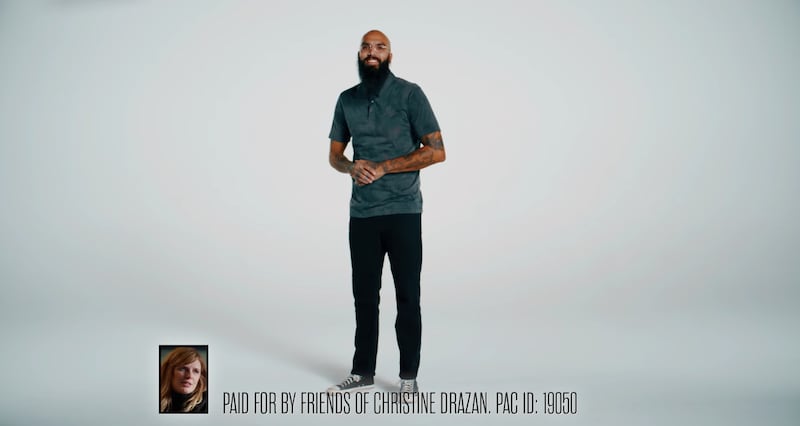Two campaign ads airing in heavy rotation on Oregon television over the Halloween weekend showed the two leading candidates for governor, in effect, costumed as their opponents.
Republican Christine Drazan, whose previous ads mostly either introduced her to voters or savaged Democrat Tina Kotek and unaffiliated candidate Betsy Johnson, took a new tack: putting people of color and city dwellers front and center. For her part, Kotek took time out from painting Drazan as a threat to democracy to tell people she’s ready to clean up the streets—a theme that sounds a lot like Johnson’s core campaign pledge.
Johnson, who trails in polls, is still airing ads but in less quantity. Her diminished air time continues as before, decrying Oregon’s failures and boosting her bipartisan cred. But Kotek and Drazan traded identities in a last-ditch grasp for voters beyond their established bases.
We asked Regina Lawrence, associate dean of the University of Oregon’s School of Journalism and an expert in political communication, to look at the two 30-second spots.
TINA KOTEK
The ad: “Certainly,” paid for by Friends of Tina Kotek
What it says: “We certainly don’t need a red state takeover to clean up the damn trash.”
Who it’s appealing to: Critics of Gov. Kate Brown and, particularly, law-and-order voters—not Kotek’s base.
Who it sounds like: A mashup of Republican Christine Drazan and unaffiliated candidate Betsy Johnson.
What Lawrence says: “The Kotek ad reflects trends around the country, as Democrats have scrambled to compete on terrain defined by two months or more of Republicans and conservative media emphasizing law-and-order themes. Campaigning on crime is hardly a new strategy for Republicans, but it seems to be working especially well this campaign season—not just here but around the country.
“It’s not surprising that Tina Kotek’s campaign feels they need to address these issues head on in order to hang on to voters who might ordinarily vote Democrat but are really frustrated with conditions on the streets—not to mention trying to draw in undecided voters and moderate Republicans who might be concerned about Drazan.”

CHRISTINE DRAZAN
The ad: “A Vote for Change,” paid for by Friends of Christine Drazan
What it says: A South Asian man, a pierced and tattooed Black man, and a white urban flannelite agree it’s OK to be a Democrat and vote for Drazan.
Who it’s appealing to: Disaffected urban Dems and unaffiliated voters seeking a home.
Who it sounds like: Voters who look like Team Kotek saying they feel like Republicans.
What Lawrence says: “What’s more interesting and perhaps surprising is the Drazan ad. It’s clearly trying to make liberals (broadly defined) feel OK about considering a Republican candidate. In part, the ad probably reflects the fact that Oregon hasn’t had a Republican governor for decades, and the Drazan campaign knows they’ll need to draw Democratic voters to win the governor’s seat (they can’t win on Republican votes alone).
“This ad for me is an example of something that isn’t getting talked about as much: that, at least in some states, Republicans might need to moderate their stands—or massage their imagery—in order to win a majority. In some places (like Wisconsin), gerrymandering has done away with the need to actually compete for votes from voters who wouldn’t normally vote for Republicans. Here in Oregon, the situation is different.”

